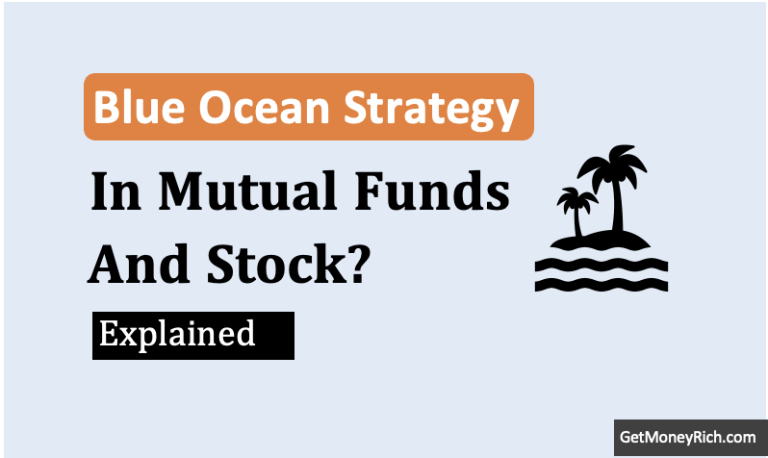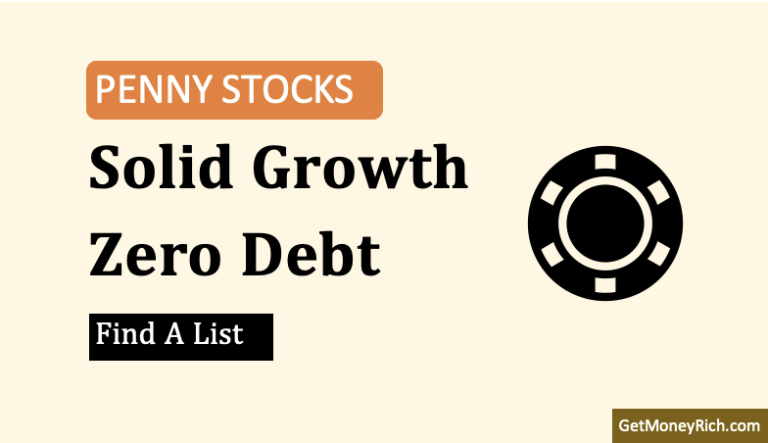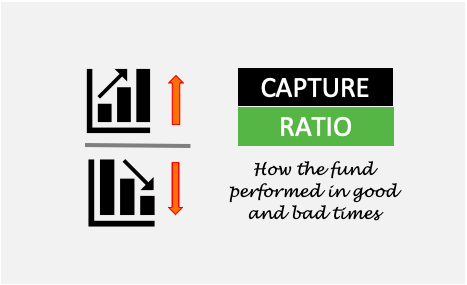In this article, you can read an interesting study done on Small Cap mutual funds.
Why small cap funds? Because it is a new exploration for me.
I personally prefer to invest in stocks of big established companies. Why?
Because such companies are less risky.
They have a proven track record which makes them comparatively safer.
But this does not mean that stocks of smaller companies do not offer value.
There must be excellent stocks, also available in small cap and mid cap segment.
Probably this is the reason why Small Cap mutual funds has gained considerable popularity in India in last decade.
Though investing in Small Cap segment does not happen naturally with us, but I thought to give it a try.
The result of my study is here in this article.
This study helped in clearing the thin-cloud hovering in my mind related to small cap sector.
#1. Asset Size
Though size of the asset of mutual fund should not be a measure of fund’s performance, but it can be a key indicator.
It indicates, where people are investing their money.
Neither too small nor too big an asset size is good for investors.
Very small asset size means, the fund has not attracted investments. This may be due to poor performance (comparatively).
Very large asset size means, the fund manager has to handle a huge chunk of cash.
More often than not, large cash works as a big hinderance for the fund manager.
For the fund house, the bigger is the asset size the better.
But for investors (and its fund manager), such large sized asset funds may not give desired returns. Why?
Bigger asset size means, the fund is having large amount of idle-cash. This cash must be invested as soon as possible.
Cash lying idle will not generate needful returns. This builds pressure on the Fund Manager.
As a result, they may end up investing the money in options which may not compliment the overall objective.
Ideally speaking, one must try to invest in mutual funds which has an asset size approximately 40-50% of the biggest fund in the market.
This is a thumb rule which has no basis. But it works fine for me.
#1.1 Small cap mutual funds:
This study has been done on 22 nos small cap mutual funds.
On an average, the asset size of these mutual funds has been Rs.3,200 Crores.
The top 3 biggest funds in small cap arena are:
- Franklin India Smaller Companies Fund – Rs.7,516 Crore
- Reliance Small Cap Fund – Rs.7,207 Crore
- DSP BlackRock Small Cap Fund – Rs.6,248 Crore
#1.2 Mid cap mutual funds:
This study has been done on 87 nos mid cap mutual funds.
On an average, the asset size of these mutual funds has been Rs.2,651 Crores.
The top 3 biggest funds in mid cap arena are:
- HDFC Mid-Cap Opportunities Fund – Rs. 21,357 Crore
- Reliance Growth Fund – Rs.7,177 Crore
- Franklin India Prima Fund – Rs.6,686 Crore
#1.3 Large cap mutual funds:
This study has been done on 194 nos large cap mutual funds.
On an average, the asset size of these mutual funds has been Rs.2,558 Crores.
The top 3 biggest funds in large cap arena are:
- HDFC Equity Fund – Rs.21,553 Crore
- Aditya Birla SL Frontline Equity Fund – Rs.20,451 Crore
- Kotak Select Focus Fund – Direct Plan – Rs.19,228 Crore
#1.4 What to conclude of the asset size?
Less number of mutual funds operate in Small Cap sector compared to Mid Cap and Large Cap.
But the average asset size of Small Cap mutual funds are bigger than Mid Cap and Large Cap funds.
It means, there is more uniformity in terms of competition (among funds) in Small Cap arena.
The biggest funds in the market are:
- HDFC Equity Fund – Asset size of Rs.21,553 Crore.
- HDFC Mid-Cap Opportunities Fund – Rs. 21,357 Crore.
Compare to these two funds, the biggest Small cap mutual fund is:
- Franklin India Smaller Companies Fund – Rs.7,516 Crore
It has an asset size of only 35% of the top market players.
It is clear that, Small Cap mutual funds does not attract as many investors as mid cap and large cap funds.
Hence it is more likely to find Small Cap mutual fund at more attractive price levels.
#2. Market Capitalisation
Asset size is a measure of the size of mutual fund.
Market capitalisation is the measure of size of the companies which the mutual fund is holding.
The market capitalisation of mutual funds depends on the type of stocks that are being held in the portfolio.
Market cap of a small cap mutual funds will be lower than that of mid and large cap funds.
The study done on 22 nos small cap mutual funds indicates:
On an average, the market capitalisation of small cap funds has been Rs.5,024 Crores.
The study done on 87 nos mid cap mutual funds indicates:
On an average, the market capitalisation of mid cap funds has been Rs.18,747 Crores.
The study done on 194 nos large cap mutual funds indicates:
On an average, the market capitalisation of large cap funds has been Rs.1,53,416 Crores.
#2.1 What to conclude (market capitalization)?
Large cap mutual funds are mainly buying stocks which are big and established.
These are such stocks which are mostly popular.
These are the names which is known to public, and hence are trading in large volumes.
Such stocks generally trade at overvalued price levels.
Finding an undervalued stock in this segment is less likely.
But the possibility of finding an undervalued stock in mid cap and small cap segment is high.
Lower market capitalisation of these mutual funds is one indicator of a possible better valuation.
But the issue with lower cap stocks is that, most of them have weaker business fundamentals.
This is where the expertise of the Mutual Fund houses kicks in.
They buy those stocks (mid and small cap) whose business fundamentals are acceptable or good.
It is more likely to find undervalued stocks in small cap areans as their popularity is low.
#3. Long term returns
Based on our above discussion, we could understand that, more undervalued stocks can be found in small cap sector.
What does it mean?
It means, small cap mutual funds must give better long term returns as compared to mid cap and large cap funds.
Lets analyse this understanding.
#3.1 Returns – Last 3 Years
Small cap mutual funds:
This study has been done on 20 nos small cap mutual funds.
On an average, the 3 year return of these mutual funds has been 18.3% p.a.
The top 3 funds generating maximum returns in small cap arena are:
- SBI Small Cap Fund – 59%
- L&T Emerging Businesses Fund – 23.79%
- Reliance Small Cap Fund – 23.65%
Mid cap mutual funds:
This study has been done on 79 nos mid cap mutual funds.
On an average, the 3 year return of these mutual funds has been 12.7% p.a.
The top 3 funds generating maximum returns in mid cap arena are:
- L&T Midcap Fund – 19.11%
- Mirae Asset Emerging Bluechip Fund – 19.09%
- Aditya Birla Sun Life Pure Value Fund – 18.54%
Large cap mutual funds:
This study has been done on 165 nos large cap mutual funds.
On an average, the 3 year return of these mutual funds has been 8.8% p.a.
The top 3 funds generating maximum returns in large cap arena are:
- JM Core 11 Fund – 15.00%
- Kotak Select Focus Fund – 13.61%
- Invesco India Growth Opportunities Fund – 13.59%
P.Note: Return of Sensex in last 3 years has been 7.54% p.a. (jump from 27,800 to 34,600 points).
Compared to the return of Sensex, following risk premium has been earned:
- Small cap: 10.5%
- Mid cap: 5%
- Large Cap: 1.3%
#3.2 Returns – Last 5 Years
Small cap mutual funds:
This study has been done on 16 nos small cap mutual funds.
On an average, the 5 year return of these mutual funds has been 30.1% p.a.
The top 3 funds generating maximum returns in small cap arena are:
- Reliance Small Cap Fund – 36.78%
- SBI Small Cap Fund – 36.02%
- Reliance Small Cap Fund – 35.44%
Mid cap mutual funds:
This study has been done on 67 nos mid cap mutual funds.
On an average, the 5 year return of these mutual funds has been 23.2% p.a.
The top 3 funds generating maximum returns in mid cap arena are:
- Canara Robeco Emerging Equities Fund – 31.03%
- Mirae Asset Emerging Bluechip Fund – 30.49%
- L&T Midcap Fund – 29.83%
Large cap mutual funds:
This study has been done on 156 nos large cap mutual funds.
On an average, the 5 year return of these mutual funds has been 14.2% p.a.
The top 3 funds generating maximum returns in large cap arena are:
- ICICI Prudential Value Discovery Fund – 21.87%
- Kotak Select Focus Fund – 20.91%
- Mirae Asset India Equity Fund – 20.8%
P.Note: Return of Sensex in last 5 years has been 11.8% p.a. (jump from 19,760 to 34,600 points).
Compared to the return of Sensex, following risk premium has been earned:
- Small cap: 18%
- Mid cap: 11%
- Large Cap: 2.4%
#3.3 Returns – Last 10 Years
Small cap mutual funds:
This study has been done on 6 nos small cap mutual funds.
On an average, the 10 year return of these mutual funds has been 15.41% p.a.
The top 3 funds generating maximum returns in small cap arena are:
- DSP BlackRock Small Cap Fund – 18.92%
- Franklin India Smaller Companies Fund – 17.9%
- HDFC Small Cap Fund – 15.69%
Mid cap mutual funds:
This study has been done on 29 nos mid cap mutual funds.
On an average, the 10 year return of these mutual funds has been 14.4% p.a.
The top 3 funds generating maximum returns in mid cap arena are:
- Aditya Birla Sun Life Pure Value Fund – 19.31%
- HDFC Mid-Cap Opportunities Fund – 19.03%
- IDFC Sterling Equity Fund – 18.39%
Large cap mutual funds:
This study has been done on 54 nos large cap mutual funds.
On an average, the 10 year return of these mutual funds has been 9.4% p.a.
The top 3 funds generating maximum returns in large cap arena are:
- ICICI Prudential Value Discovery Fund – 17.11%
- Mirae Asset India Equity Fund – 15.26%
- Quantum Long Term Equity Value Fund – 13.84%
P.Note: Return of Sensex in last 10 years has been 6.97% p.a. (jump from 17,630 to 34,600 points).
Compared to the return of Sensex, following risk premium has been earned:
- Small cap: 8.4%
- Mid cap: 7.4%
- Large Cap: 2.4%
Conclusion
What was our question?
Small Cap mutual funds are better than Mid Cap or Large Cap funds?
The answer is definitely Yes.
But this is true only when one stays invested for long term investment horizons.
See the below table for one to one comparison:
| Returns | 3 Year | 5 Year | 10 Year |
| Sensex | 7.54% | 11.84% | 6.97% |
| Small Cap | 18.30% | 30.10% | 15.40% |
| Mid Cap | 12.70% | 23.20% | 14.40% |
| Large Cap | 8.80% | 14.20% | 9.40% |
The returns of small cap mutual funds are great. But one must invest in these funds with caution.
There is an important rider that must be followed before investing in small cap mutual funds.
What is that?
Buy mutual fund units and then hold it for at least 7 years
Do not get swayed by their fantastic 3 and 5 years returns.
Yes they are great, but for such holding times, the risk of loss is also too high.
If one really wants to invest with 3 or 5 years time horizon, better alternative is mid cap or large cap mutual funds.
Have a happy investing.







Dear Mani,
great articles but I would suggest you put date for your articles it helps especially when you are analyzing some stocks or funds.
Regards
Hi,
I have 15lacrupees, want to invest for at least 5years.
I want to start a monthly SIP of 50K. Could you please suggest the best way?
I think it will be best for you to follow an investment strategy (check this link).
If you are new to investment, check this post on investment basics as well.
One you’ve read these 2 article, I’m sure you will have your answers.
Thanks for asking.
Hello,
Any suggestions or correction regarding trailing MFs
Emergency Fund Allocation
Edelweiss Arbitrage Fund-Direct-Growth +Axis Liquid Fund-Direct-Growth
Short Term (3-5 yrs) Total-3000/-
Franklin India Low Duration Fund -Direct-Growth 3000/-
Medium Term (Son Graduation) (15-17 yrs) 12000/-
Franklin India Smaller Companies fund-Direct-Growth (Small Cap) 4000/-
L&T mid Cap Fund-Direct-Growth (Mid Cap) 4000/-
Axis Blue Chip Fund-Direct-Growth (Large Cap) 4000/-
Long Term (Retirement Allocation (25+yrs) 12000/-
L&T Emerging Business Fund-Direct-Growth (Small Cap) 4000/-
HDFC Midcap Opp. Fund-Direct-Growth (Midcap) 4000/-
Aditya Birla Sun Life Equity Fund-Direct-Growth (Multicap) 4000/-
Checked with common stocks and portfolio overlap (approximately 4-5 % )
Equity & Debt ratio – 70:30
As the time duration is more have included midcap,small cap and multicap in the portfolio
Appreciate your effort and good work, Thanks in advance.